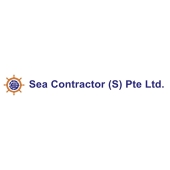
In the realm of offshore operations, safety is paramount. Whether it’s in the exploration of oil and gas fields or offshore construction projects, mitigating risks and ensuring the well-being of personnel is a top priority. One crucial aspect of safety that often goes unnoticed is the installation of helideck perimeter safety nets. These nets serve a vital role in safeguarding lives and property, making them an indispensable component of any offshore structure or vessel. In this article, we will explore why helideck perimeter safety nets are of utmost importance and how they contribute to the overall safety of offshore operations.
Safety Above All – The Sea Contractor Approach
At Sea Contractor, we understand that safety is not just a priority but a core value. Our commitment to ensuring the well-being of our personnel and the success of our offshore projects is unwavering. That’s why we’ve incorporated helideck perimeter safety nets as a standard feature in all our offshore structures and vessels. Let’s delve into the reasons behind this decision.
1. Preventing Accidental Falls
Accidental falls from helidecks can have catastrophic consequences. Helicopters are essential for personnel transfer to and from offshore platforms and vessels, but the helideck itself poses inherent risks. Helideck perimeter safety nets act as a protective barrier, preventing individuals from accidentally falling off the platform during landing, takeoff, or routine operations.
- Enhanced Safety: The presence of safety nets significantly reduces the risk of personnel falling from the helideck, offering peace of mind to all onboard.
2. Mitigating the Impact of Crash Landings
In the event of an emergency, such as a helicopter crash landing, helideck perimeter safety nets play a crucial role in absorbing the impact and preventing the aircraft from sliding off the platform into the sea. This function is vital for minimizing damage to both the helicopter and the helideck, as well as ensuring the safety of the occupants.
- Minimized Damage: Safety nets reduce the risk of catastrophic damage to the helicopter and the helideck, potentially saving lives and equipment.
3. Safe Evacuation Routes
In emergency situations, a quick and safe evacuation is essential. Helideck perimeter safety nets serve as a safe route for personnel to escape from the helideck in case of fire, structural failure, or other emergencies. This ensures that everyone has a chance to evacuate the platform or vessel safely.
- Rapid Evacuation: Safety nets provide a designated path for personnel to escape, reducing the chaos and ensuring a more orderly evacuation.
4. Protecting Equipment and Infrastructure
Offshore operations involve valuable equipment and infrastructure that must be protected at all costs. Safety nets act as a shield, preventing debris, tools, or equipment from falling into the sea, which could result in environmental damage, loss of assets, or personnel injury.
- Asset Protection: Safety nets help safeguard expensive equipment and infrastructure, reducing downtime and replacement costs.
5. Regulatory Compliance
Helideck perimeter safety nets are not just a good practice; they are often a regulatory requirement in many offshore jurisdictions. Compliance with these safety standards is non-negotiable for operators like Sea Contractor, who prioritize safety above all else.
- Regulatory Adherence: Installing safety nets ensures compliance with industry regulations, reducing legal and operational risks.
6. Peace of Mind
Safety nets provide peace of mind to personnel, passengers, and stakeholders. Knowing that measures are in place to mitigate risks and respond to emergencies boosts confidence in offshore operations and fosters a culture of safety.
- Confidence and Trust: Safety nets instill trust among all parties involved, from crew members to investors, that safety is a top priority.
Conclusion
In the challenging and often hazardous environment of offshore operations, every precaution counts. Helideck perimeter safety nets, like those provided by Sea Contractor, are a crucial safety measure that should not be overlooked. Their ability to prevent falls, absorb the impact of crash landings, provide safe evacuation routes, protect equipment and infrastructure, ensure regulatory compliance, and offer peace of mind make them indispensable components of offshore structures and vessels. When it comes to offshore safety, Sea Contractor leads by example, demonstrating that safety is not just a priority but a way of life.


